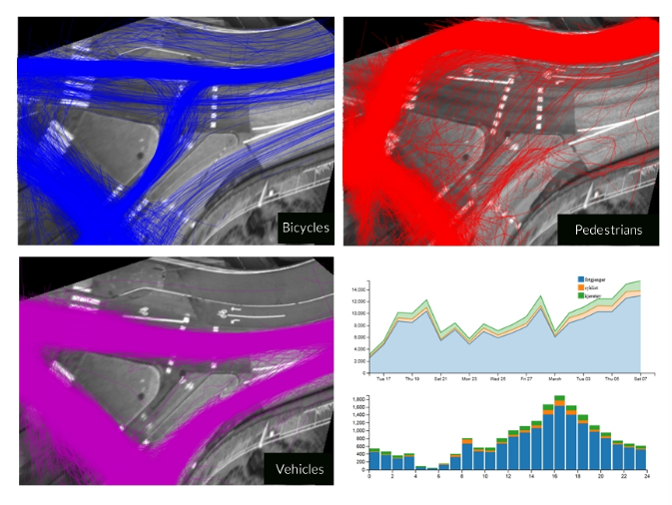Pilots

Correct information on the use of this crossroad, on the near accidents, the numbers of all road users, the timeframes is essential. It allows for a better follow-up of short-term measures to improve road safety by a joint effort of the province and the community of Bornem.
Camera technology
For this research the Swedish company Viscando worked together with local company SIGNCO to correctly install the camera’s. The camera footage was processed by AI to anonymised categories of road users, their trajectories and speed on each part of those trajectories. The analysis of driver, cyclist and pedestrian trajectories provided the visualisation of near accidents of the different types of road users.
Valuable data
This camera-technology allows for a short-term objective observation of traffic behaviour on a crossroad to take measures to improve the safety of cyclists and all road-users. On a longer term, the same technology can be used to objectively measure the achieved (and hopefully improved) safety after an infrastructural adjustment.
In particular the possibilities to detect near accidents offers valuable insights. Today most crossroads become a priority for traffic managers based on accidents that have happened already. The simple version here is that we don’t have to wait for the accident to happen. This is essential when we aim for zero tolerance on accidents, which is the expressed ambition of the governor of the province. Near accidents and the detected behaviour can be compared with the desired use to detect the crossroad’s design flaws and improve it.
The research in Bornem showed clearly that cyclists and pedestrians do not use the marked crossings as they are today, but they use the entire surface between both crossings east and west of the railroad. The one-way cycle paths are used in both directions and the angles of the crossings are clearly too sharp. This explains the registration of roughly 24 near accidents per day between cyclists. The analysis also shows that the number of near accidents between cyclists and cars (8 per day) is almost the same as between cars and cars (7 per day).
Other BITS pilots
Other BITS partners are testing different techniques, Zwolle works on the Sniffer bikes that detect air quality and show healthier cycle routes on a map. Some work with sensors that detect cyclists and give them green at traffic lights. Baron Mobility in Germany will work on a gamification app that encourages people to cycle more and engage others to cycle too. Beverley (UK) will start counting cyclists in Withernsea. All these pilots will be presented on the BITS website and their datasets, dataformats will be registered, categorized, and made available on the Cycle Data Hub.

